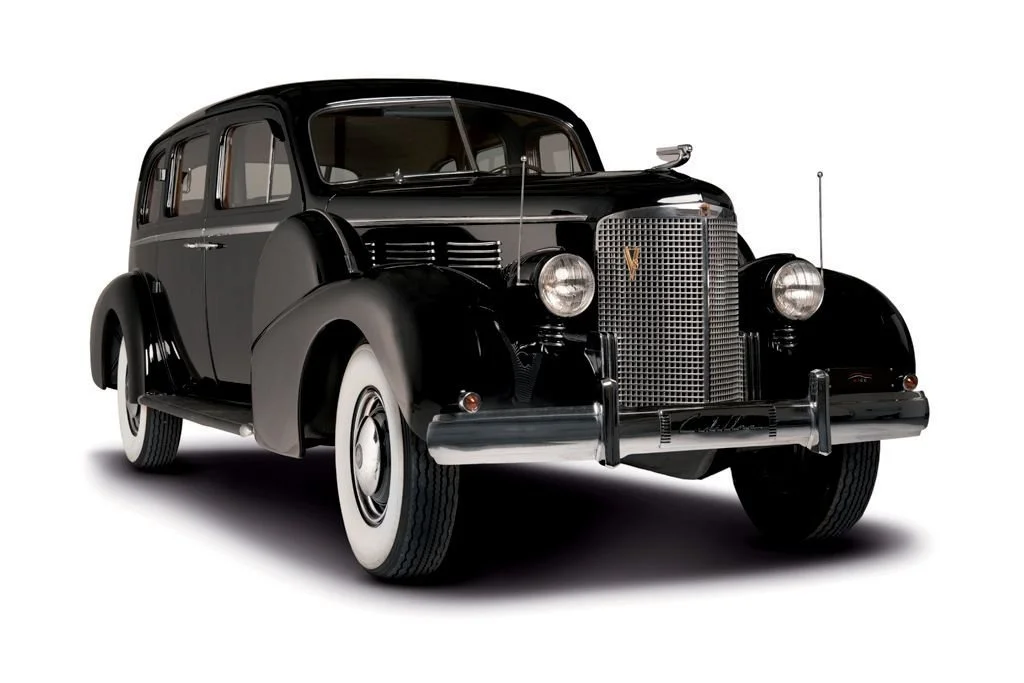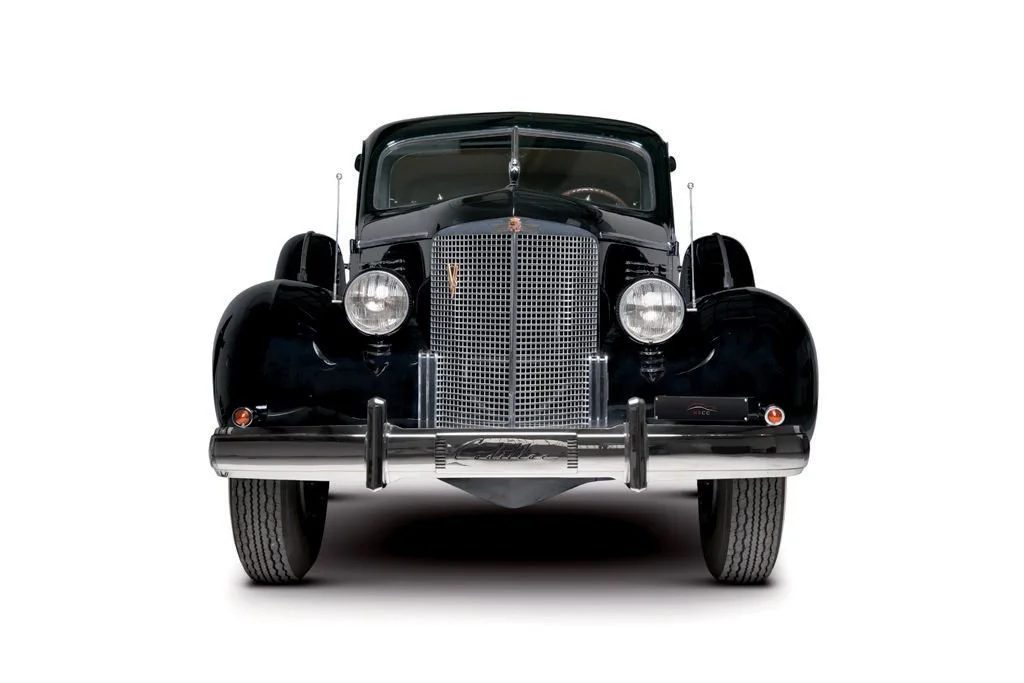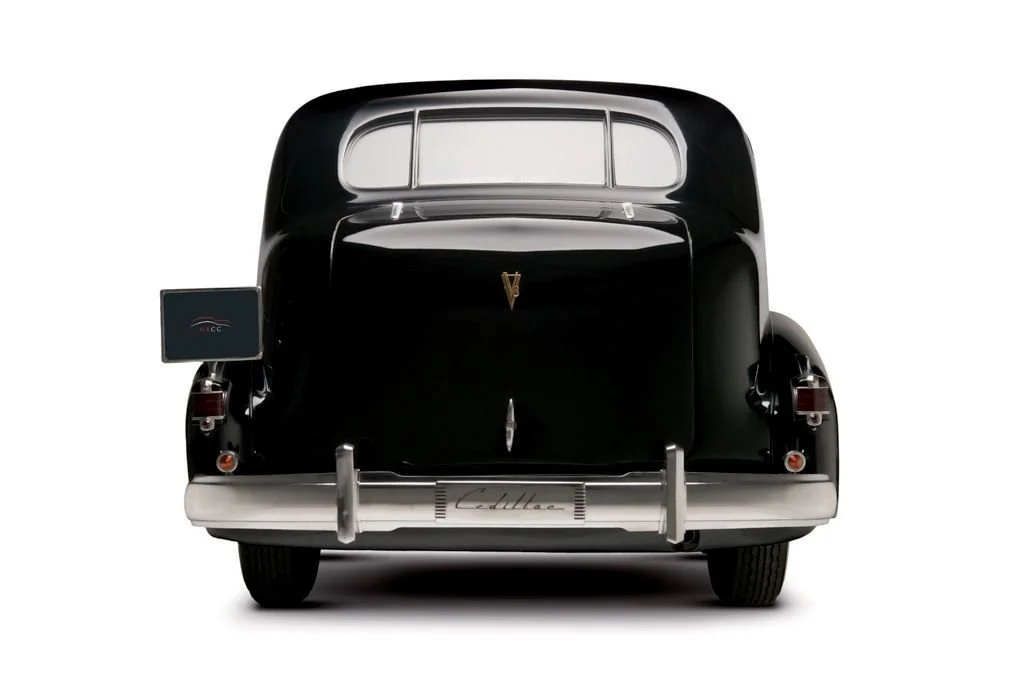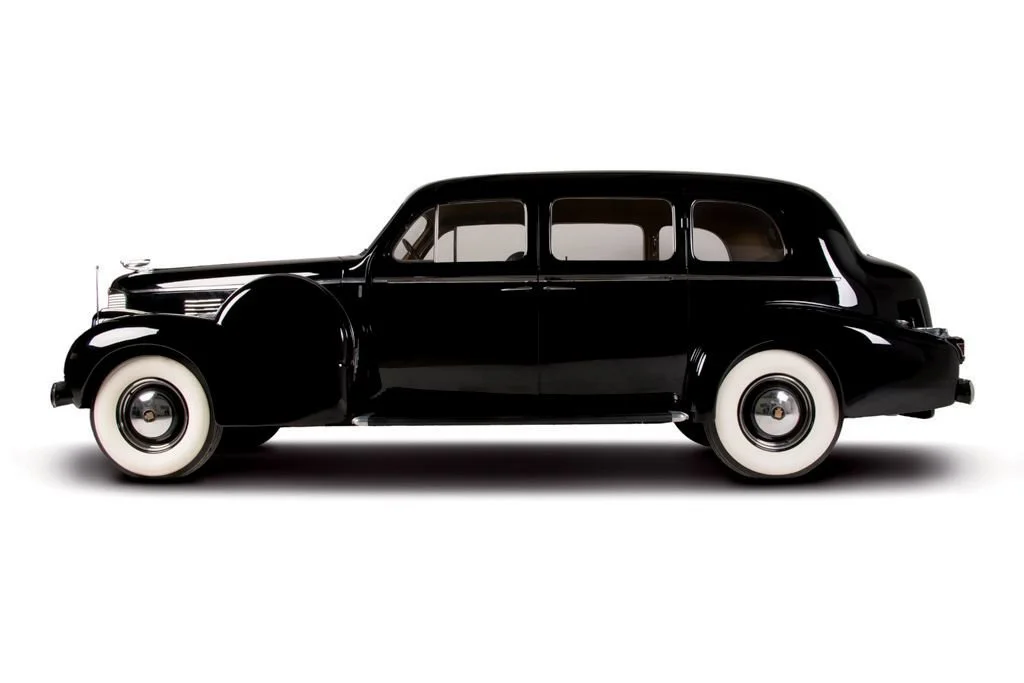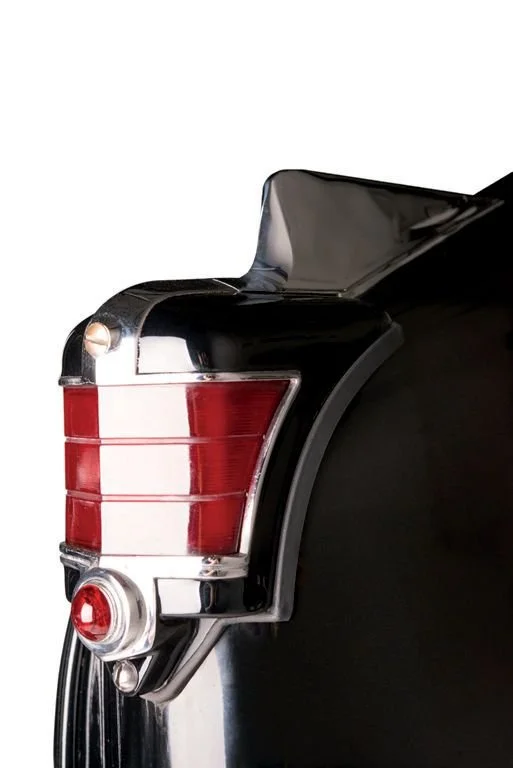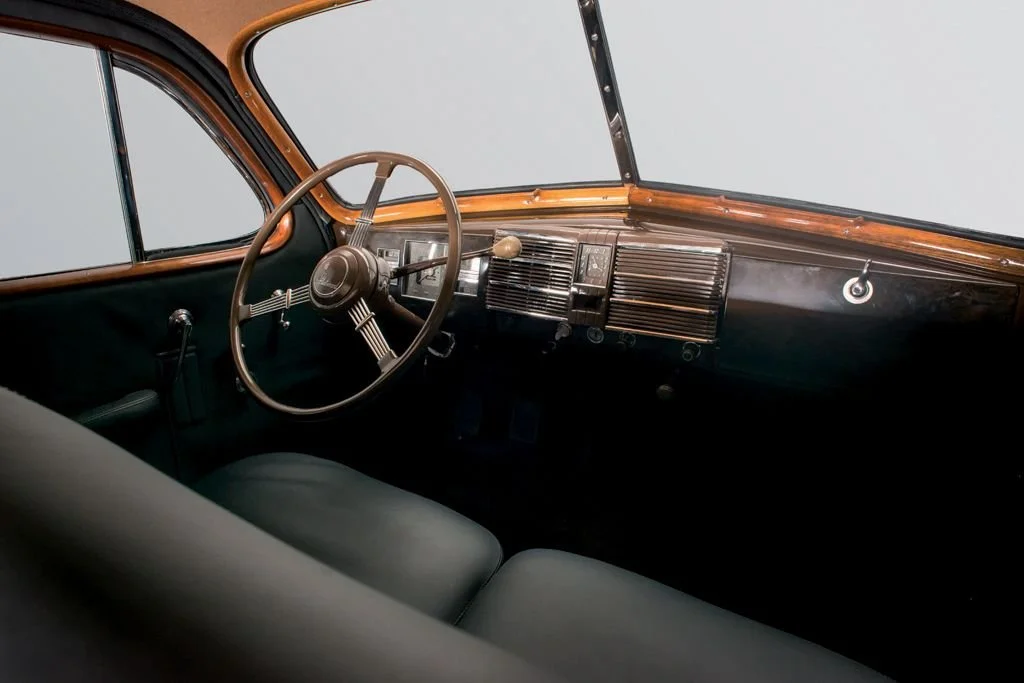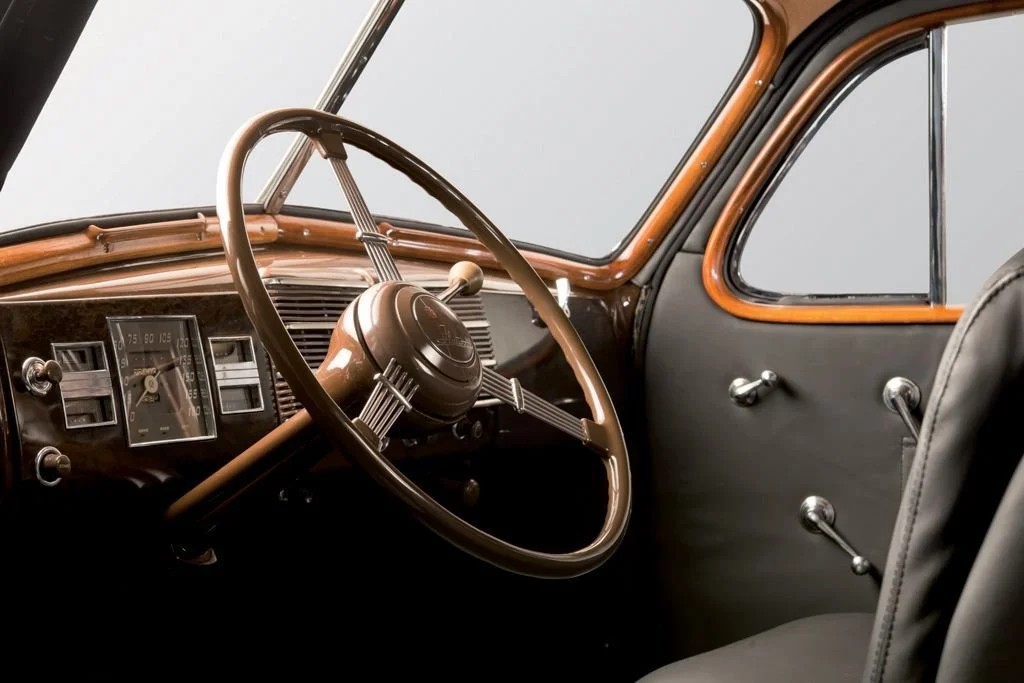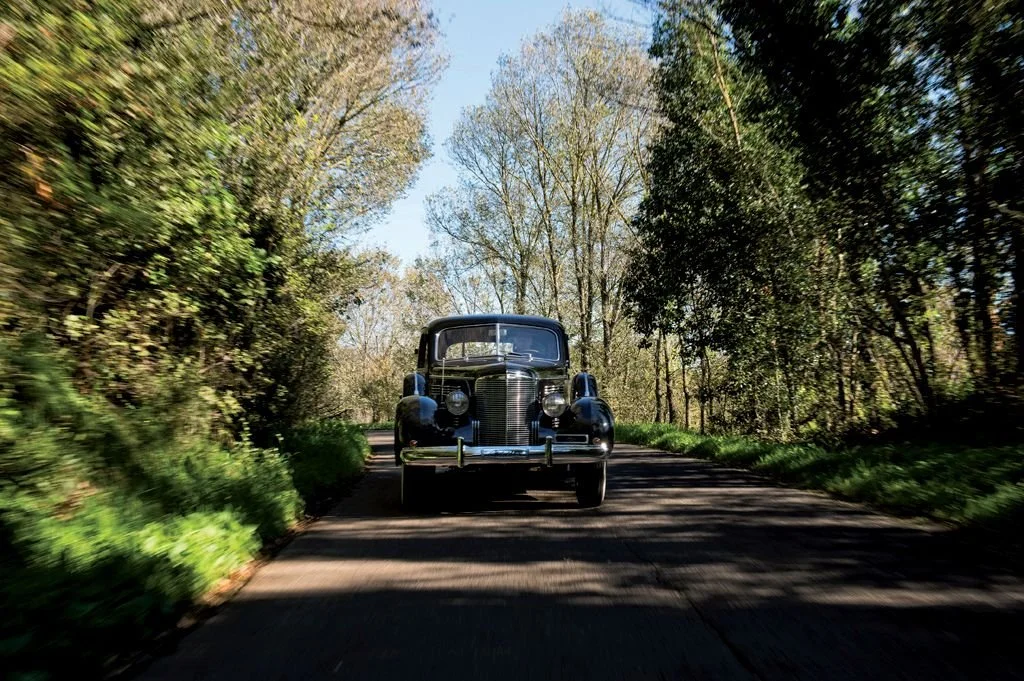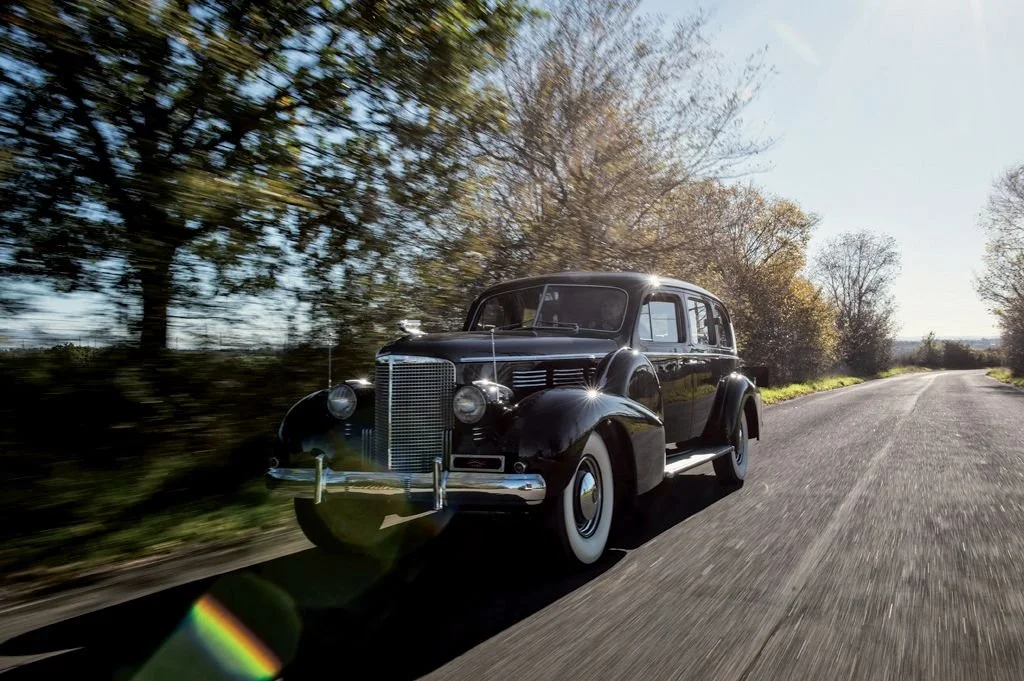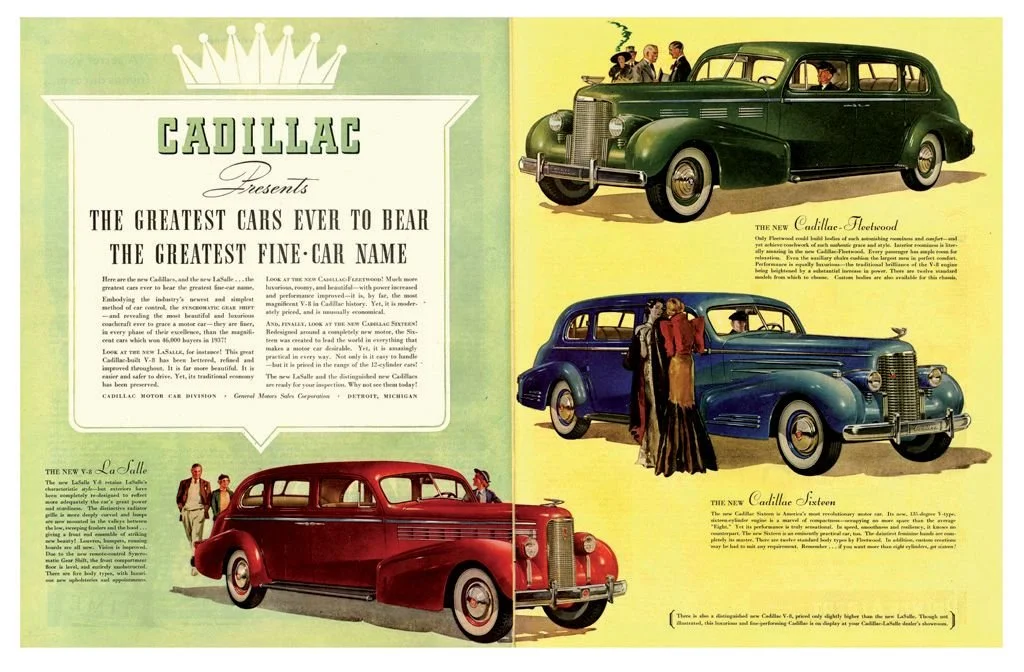-
This 1938 Cadillac Series 75 Touring Sedan was ordered by Città del Vaticano as an official car to be used in parades and to pick up dignitaries and Heads of State visiting his Holiness the Pope from all over the world. Its intended use was as a backup car to another identical car that had been ordered at the same time. When it arrived at the Garage Nobile in Città del Vaticano, the Cadillac was readied for its intended use and assigned the license plate SCV14. License plates had a meaning, and the lower the number, the higher the importance. The twin of SCV14 was assigned SCV11, so it was meant to be used as a backup for the lower numbered car. When the official use of SCV14 was over, the car was sold to the Conti family, a long time suppliers of cars to the movie industry. They owned the car for fifty or so years, and in this time span it was used in many movies, the most famous one being “Patton”, a 1970 movie directed by Franklin Shaffner on the life of the famous army general.
In January 2016 the car arrived at the Nicola Bulgari Car Collection in Rome, and underwent a complete mechanical restoration, where the bodywork was handled by Carrozzeria Rizza and the interior by Tappezzeria Massenzi. -
Company
General MotorsWheelbase
141inInterior trim
Beige clothBrakes
front and rear drumsMake
CadillacLength
220.5inEngine
V8 - 346cidTires
7.00x16Model
Series 75 model 7533 Imperial Touring SedanWidth
75inCarburetor
1 Stromberg AAV 25Original Price
$3,360Body style
Limousine 4-door SedanWeight
5105lbsHorsepower
140hp @ 3400rpmProduction
479Model year
1938Exterior paint
BlackTransmission
Synchro-shift 3-speed manual -
The Depression years had not been kind to Cadillac, with sales that had declined from over 18,000 units in 1929 to only 6,000 in 1933. The harsh Depression years and a line-up with too many models with small differences in construction and finishes made production uneconomical, generating huge losses. Had Cadillac not been part of the huge General Motors Corporation, survival could have been really tough. A new general manager, Nicholas Dreystadt, reorganized the Cadillac division, cutting the variety of models to a more reasonable number, sharing the bodies with those of the other General Motors divisions, and rationalizing engines and other mechanical parts. The V12 engine was discontinued at the end of the 1936 model year, and the V16 followed the same fate four years later. Sales of the multi-cylinder cars had always been very scarce, and they could not be justified any longer. Besides, the 346 cubic inch V8 engine, introduced in 1936, was the most powerful and reliable engine ever produced, with performance very close to the V12 and V16 engines. The big engines had the bad reputation of being very thirsty, and reliability was not their strongest point. The 346 engine was a masterpiece of construction and reliability, powering cars and military vehicles, and would stay in production until 1949, when it was superseded by the new 331 cubic inch overhead valve V8. Most of the bodies were shared with Buicks and Oldsmobile senior series, to save on manufacturing costs. Starting in 1935 they were all-steel construction, setting new standards of quality and styling. After an all-time sales record for 1937, production dropped a bit in 1938, due to a sharp recession that hit the economy in later moths of that year. But it was momentary, as sales picked up the next years.
-
Until 1929 the Vatican had no cars at all, relying on traditional horse-drawn carriages. It was only when it was established as a State that it acquired its first automobile, a Graham-Paige. That car remains in the Vatican museum to this day, but the other pre-war limousines that were used for VIP transport – Buicks, Cadillacs and Packards – were disposed of and eventually acquired by The NB Center.
The history of the Vatican limousines is astonishing. The NB Center’s archive includes photographs of several of them – brand new and still unregistered – being blessed by Pope Pius XI in 1938, of the Cadillacs with Pius XII and John XXIII, and of the cars’ use by notable figures including royalty, heads of state and high-ranking diplomats.
Some of these ex-Vatican cars were found in excellent condition; they were not much used, so their engines were near-perfect. Others fared less well; a Cadillac sold off in the early 1960s ended up in the 1970 movie ‘Patton’ and was in poor shape. One of the Packards was also used in movies and had acquired a different engine and transmission, leaving it with two shift levers. Nevertheless the underlying build quality of the cars is very evident; in some cases the chrome brightwork merely needed polishing.
The skilled and committed NB Center teams in Rome have learned a great deal from their colleagues in Allentown, and the repair and restoration of the Vatican cars were all managed entirely in-house by the mechanical staff led by Sergio Caudai and by the skilled bodyshop team of Carrozzeria A. Rizza.
The limousines have all received sensitive restoration, maintaining as much of their precious originality as possible. These exceptional and historic vehicles should stay in Rome, of course, but The NB Center intends to create a special place for them in the city, separate from the rest of the collection, where their intriguing story may be presented in all its fascinating detail.

